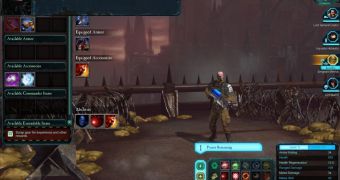Relic, as the developer, and THQ, as the publisher, have recently launched the second expansion for Dawn of War II, called Retribution, which introduced some more traditional real-time strategy elements to a series that surprised everyone in 2009 when it eliminated based building and unit recruitment from the single-player section of the game.
Some fans have seen the move as an admission that the original streamlining of the game went too far, but at least one developer that worked on the game says simplicity is one of the main aims of the team at Relic.
Daniel Kading, who is a designer that worked on the Dawn of War II series, told Gamasutra as part of a bigger interview that, “The goal was to try to make RTS more accessible. Typically RTS games have a steep learning curve. You can't really just jump in and start playing online.”
He added, “I do not want to dilute the experience for core RTS fans - streamlining doesn't refer to 'dumbing down,'. Instead, improvements to interface, controls and AI are always worthwhile, and I believe there are game modes and reward schemes that can appeal to both newcomers and veterans alike.”
Kading believes that in some ways real-time strategy games will always be more complex than other popular genre, like the first-person shooter, but he says the developers working on the genre should try and make them as accessible as possible in order to draw a bigger group of gamers.
Retribution made the single-player section of the game, where the player can use six factions to go through a series of missions, more open, allowing players to focus on the heroes they are provided with or to go a more traditional route and focus on recruited squads and Honor Guard units.
A full review of Dawn of War II: Retribution is available on Softpedia.

 14 DAY TRIAL //
14 DAY TRIAL //